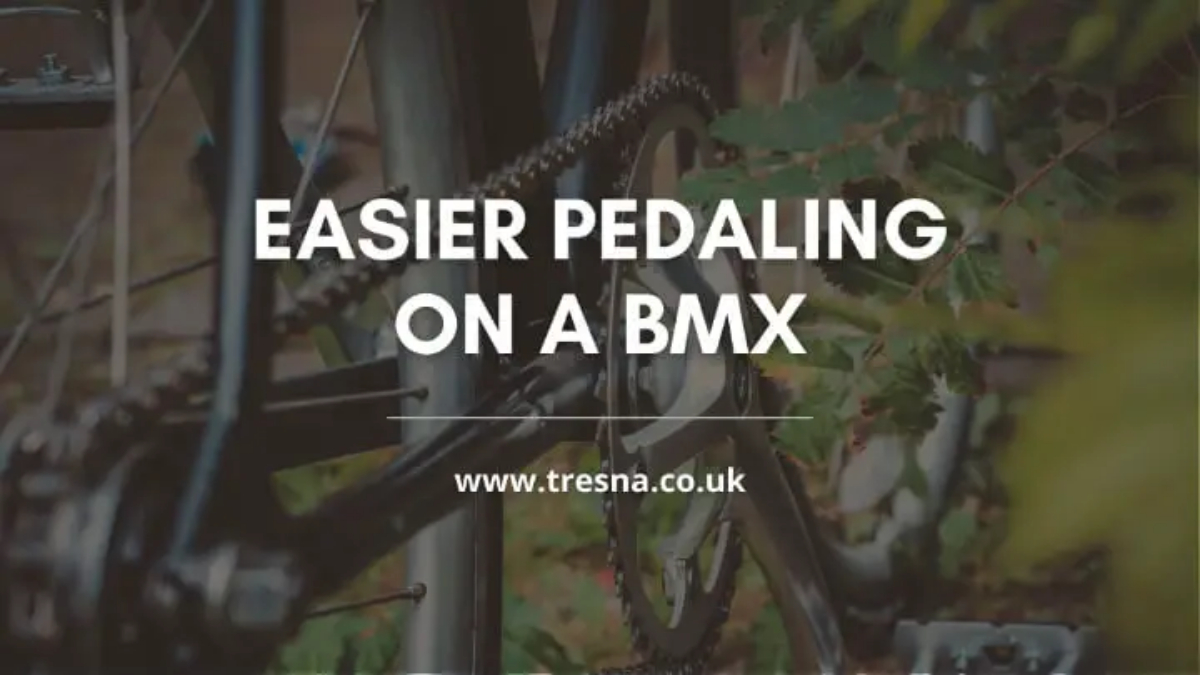
Riding a BMX bike should be all about fun and excitement. However, if pedaling feels like a chore, it can hinder your performance and enjoyment on the bike. In this guide, we'll explore how to make a BMX bike easier to pedal, so you can fully enjoy your riding experience and boost your skills.
We'll cover essential topics such as selecting the right gearing, ensuring proper bike fit and saddle position, choosing the right tires, maintaining your bike, and upgrading components. Each of these factors plays a crucial role in making your BMX bike easier to pedal and enhancing your overall riding experience.
By optimizing your bike setup, you'll be able to ride more efficiently and comfortably, allowing you to focus on perfecting tricks, improving your speed, and simply having a great time on your BMX bike. So, let's dive in and discover how to make your BMX bike easier to pedal!
Importance of easy pedaling for BMX riders
Easy pedaling is crucial for BMX riders, as it directly impacts their performance, endurance, and enjoyment while on the bike. When a BMX bike is easier to pedal, it allows riders to maintain their momentum, conserve energy, and focus on executing tricks and maneuvers with precision.
Efficient pedaling contributes to smoother rides and improved control, particularly when performing jumps, manuals, and other technical BMX moves. It also reduces the risk of injuries caused by muscle strain or fatigue, as less force is required to propel the bike forward.
Additionally, easy pedaling enables BMX riders to maintain higher speeds with less effort, which is particularly important in racing scenarios. In both racing and freestyle BMX, an efficient and comfortable pedaling experience is key to unlocking your full potential as a rider and ensuring a fun, rewarding time on the bike.
Factors affecting pedaling difficulty
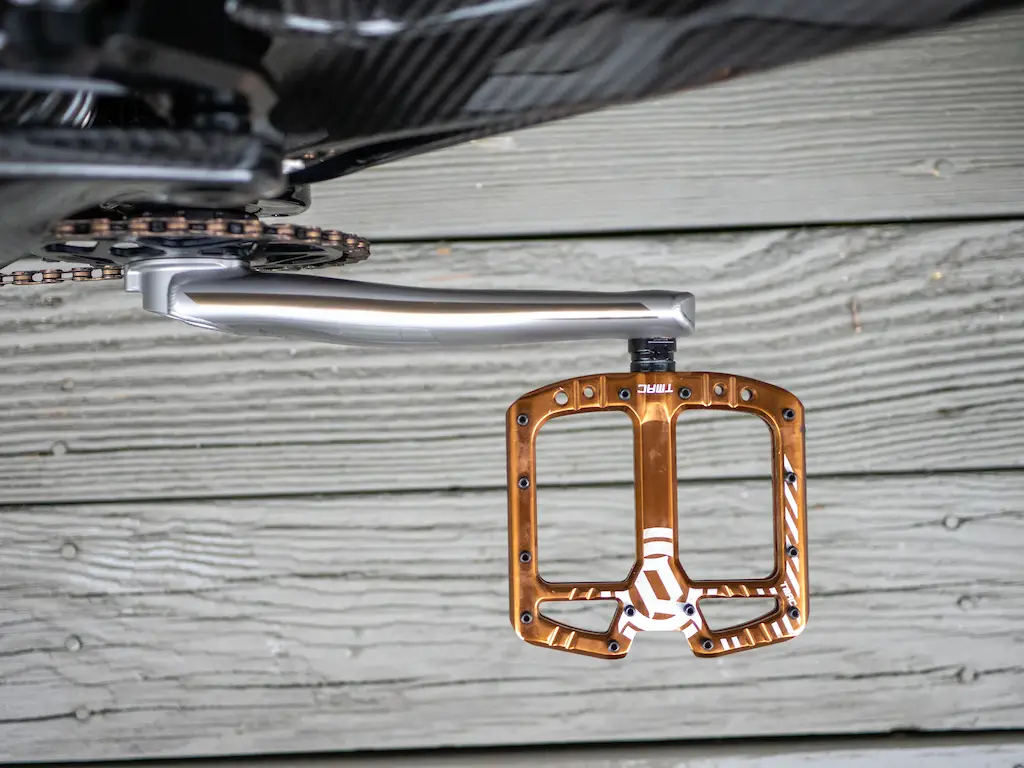
![]() Photo by timlikesbikes
Photo by timlikesbikes
Several factors can contribute to pedaling difficulty on a BMX bike, and understanding them can help you optimize your bike setup for a smoother and more enjoyable riding experience.
- Gearing: The gear ratio on your BMX bike directly affects how hard or easy it is to pedal. A high gear ratio requires more force to pedal but offers faster acceleration, while a lower gear ratio makes it easier to pedal but results in lower top speeds. Finding the right balance based on your riding style and preferences is essential.
- Bike Fit and Saddle Position: An improperly fitted bike or an incorrect saddle position can make pedaling harder and less efficient. Ensuring that your bike is the right size and that your saddle is correctly adjusted can make a significant difference in pedaling comfort and efficiency.
- Tire Selection and Pressure: The type of tires you use and the pressure they are inflated to can also affect how easy it is to pedal your BMX bike. Wider tires with lower pressure may offer more grip but can increase rolling resistance, making pedaling more difficult. Finding the right balance of tire width and pressure is essential for optimizing your pedaling experience.
- Maintenance and Lubrication: A poorly maintained bike can greatly increase pedaling difficulty. Ensuring that your chain, drivetrain, and other moving components are clean, well-lubricated, and in good working order can make pedaling much easier.
- Bike Components: The weight and quality of your bike's components can also impact pedaling difficulty. Lighter, more efficient components can help reduce the overall weight of your bike and make it easier to pedal. Upgrading to high-quality components can improve your bike's performance and make pedaling more efficient.
By addressing each of these factors, you can make your BMX bike easier to pedal and enhance your overall riding experience.
Choosing the Right Gearing
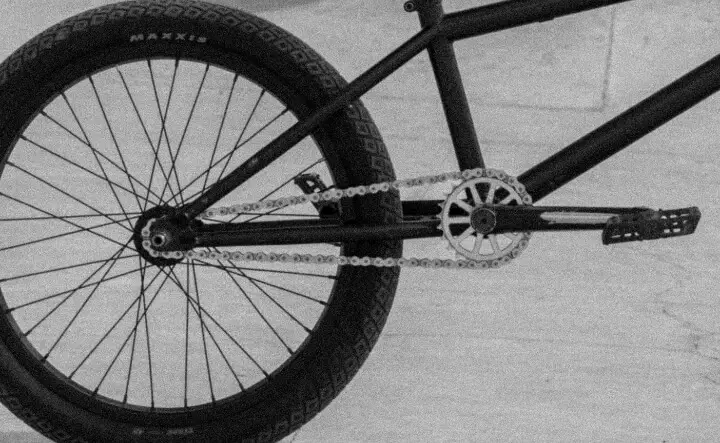
Understanding Gear Ratios
The gear ratio on your BMX bike refers to the relationship between the number of teeth on the front chainring (or sprocket) and the number of teeth on the rear cog. It is calculated by dividing the number of teeth on the front chainring by the number of teeth on the rear cog. For example, a bike with a 25-tooth front chainring and a 9-tooth rear cog has a gear ratio of 25/9 or 2.78.
A higher gear ratio results in a harder gear, which requires more force to pedal but offers faster acceleration and higher top speeds. Conversely, a lower gear ratio is easier to pedal but provides slower acceleration and lower top speeds.
Optimal Gear Ratio for Different Riding Styles
The optimal gear ratio for your BMX bike will depend on your riding style and personal preferences. Here are some general guidelines for different types of BMX riding:
- Racing: BMX racing typically requires a higher gear ratio to achieve faster acceleration and higher top speeds on the track. A gear ratio between 2.5 and 3.0 is commonly used for racing, with some riders preferring even higher ratios for maximum speed.
- Freestyle/Park: Freestyle and park riding often involve a mix of technical tricks and transitions, requiring a balance of easy pedaling and quick acceleration. A gear ratio between 2.3 and 2.8 is generally suitable for this type of riding.
- Street: Street riding usually demands quick acceleration and the ability to easily maneuver through tight spaces. A lower gear ratio between 2.0 and 2.5 is often preferred by street riders for its easy pedaling and responsive handling.
Adjusting the Gear Ratio
To adjust the gear ratio on your BMX bike, you'll need to change either the front chainring, the rear cog, or both. Here's how:
- Front chainring: Increasing the number of teeth on the front chainring will result in a higher gear ratio, making pedaling harder but providing faster acceleration. Decreasing the number of teeth will result in a lower gear ratio, making pedaling easier but offering slower acceleration.
- Rear cog: Increasing the number of teeth on the rear cog will result in a lower gear ratio, making pedaling easier and providing slower acceleration. Decreasing the number of teeth will result in a higher gear ratio, making pedaling harder but offering faster acceleration.
Experimenting with different gear ratios and finding the one that best suits your riding style and preferences is essential for optimizing your BMX bike's pedaling efficiency and overall performance.
Proper Bike Fit and Saddle Position
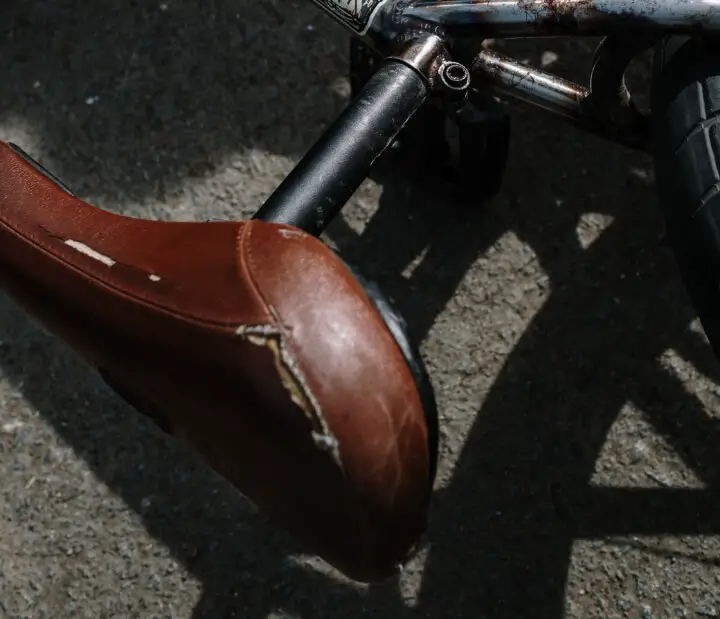
Importance of Bike Fit
A proper bike fit is essential for efficient pedaling and comfortable riding. An ill-fitting bike can lead to discomfort, reduced performance, and even injuries. A well-fitted bike allows you to pedal more effectively, conserve energy, and maintain better control.
Finding the Correct Saddle Height
The correct saddle height ensures optimal leg extension while pedaling, maximizing power transfer and reducing fatigue. To find the right height, sit on the saddle with your heel on the pedal at its lowest point. Your leg should be fully extended without your hips rocking side to side. Adjust the saddle accordingly.
Adjusting Saddle Position
Saddle position affects your weight distribution and balance on the bike. To find the right position, sit on the saddle with the pedals parallel to the ground. Your knee should be directly above the pedal axle when the crank arms are horizontal. Adjust the saddle forward or backward to achieve this alignment, ensuring a comfortable and efficient riding position.
Tire Selection and Pressure
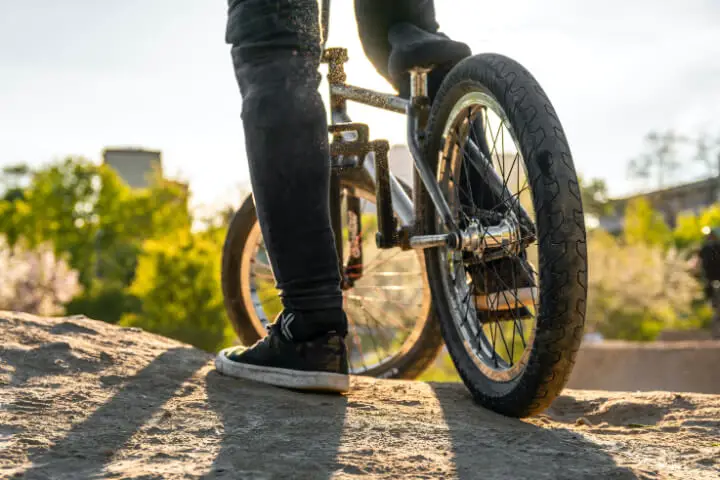
Role of Tires in Pedaling Efficiency
Tires play a significant role in pedaling efficiency, as they affect rolling resistance, grip, and overall ride quality. The right tires can make pedaling easier and improve your bike's performance on various surfaces.
Choosing the Right Tire Type
The right tire type depends on your riding style and the terrain you encounter. For BMX racing, choose narrow, smooth tires that reduce rolling resistance and increase speed. For freestyle, park, and street riding, opt for wider tires with more tread for better grip and control during tricks and maneuvers.
Optimal Tire Pressure
Tire pressure affects rolling resistance, grip, and ride comfort. Higher pressure reduces rolling resistance but can compromise grip, while lower pressure improves grip but increases rolling resistance. Experiment with tire pressure to find the right balance for your riding style and terrain. Check the recommended pressure range indicated on the tire sidewall as a starting point.
Maintenance and Lubrication
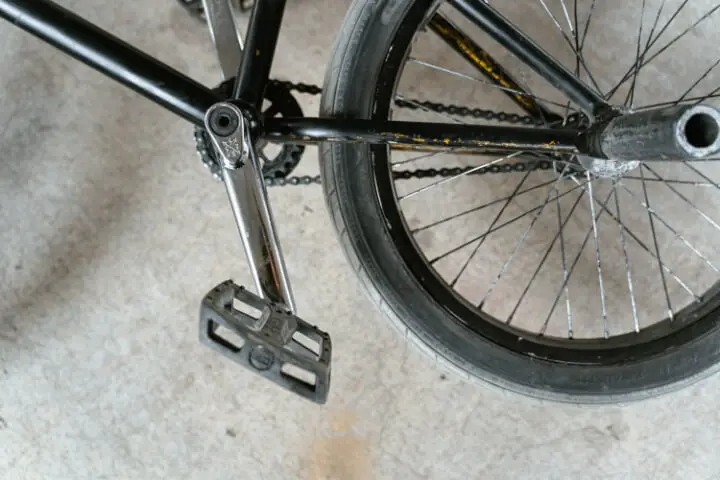
Regular Maintenance Schedule
Sticking to a regular maintenance schedule ensures your BMX bike remains in optimal condition, making it easier to pedal and improving overall performance. Perform basic maintenance tasks, such as checking tire pressure, tightening bolts, and inspecting brakes, before each ride.
Lubricating the Chain and Other Components
Proper lubrication of the chain and other moving components reduces friction and makes pedaling easier. Clean and lubricate your chain regularly, and apply a light, bike-specific lubricant to brake and derailleur pivots as needed.
Cleaning and Inspecting the Drivetrain
A clean and well-functioning drivetrain is essential for smooth, efficient pedaling. Regularly clean and inspect your chain, chainring, and rear cog for wear, damage, or excessive dirt buildup. Replace worn components to maintain optimal performance and pedaling efficiency.
Upgrading your Drivetrain Components
Lighter and More Efficient Components
Investing in lighter and more efficient components can significantly improve pedaling efficiency and overall bike performance. Reducing your bike's weight makes it easier to pedal, maneuver, and accelerate.
Upgrading the Crankset and Pedals
A high-quality crankset and pedals can improve power transfer and pedaling efficiency. Look for lightweight, stiff, and durable options that suit your riding style. Additionally, consider upgrading to sealed bearing pedals for smoother rotation and reduced maintenance.
Upgrading the Wheelset
A lighter, more responsive wheelset can greatly impact pedaling efficiency and bike handling. Upgraded wheelsets often feature lighter rims, hubs, and spokes, which reduce rotational weight and improve acceleration. Choose a wheelset that suits your riding style, budget, and performance goals.
How often should I lubricate my chain and other bike components?
You should lubricate your BMX bike chain and other components approximately every 100 miles (160 kilometers) or at least once a month, depending on your riding frequency and conditions. If you frequently ride in wet, muddy, or dusty environments, you may need to clean and lubricate your chain more often to ensure smooth, efficient pedaling and prolong the life of your drivetrain components. Other moving components, such as brake and derailleur pivots, should be lubricated as needed, typically every few months or whenever they start to feel stiff or make noise.
Are there any specific BMX bike components that can help improve pedaling efficiency?
Yes, there are specific BMX bike components that can help improve pedaling efficiency:
- Crankset: A lightweight, stiff, and durable crankset ensures better power transfer and pedaling efficiency. Look for high-quality materials like aluminum or carbon fiber to reduce weight and increase stiffness.
- Pedals: Upgrading to sealed bearing pedals can provide smoother rotation and reduced maintenance, improving pedaling efficiency. High-quality, grippy flat pedals or clipless pedals can also help maintain better foot-to-pedal contact for more effective power transfer.
- Wheelset: A lighter, more responsive wheelset reduces rotational weight, making it easier to pedal, accelerate, and maneuver. Upgraded wheelsets often feature lighter rims, hubs, and spokes, which contribute to improved pedaling efficiency.
- Chain and drivetrain components: Keeping your chain and drivetrain components clean, well-lubricated, and in good working order ensures smoother and more efficient pedaling. Consider using high-quality chains and sprockets for better durability and performance.
By upgrading these components, you can improve your BMX bike's pedaling efficiency and overall performance.




